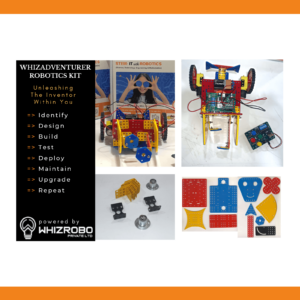Apart from anything else, Augmented Reality (AR) and Virtual Reality (VR) are at the cutting edge of technological revolution. They are, in a sense, reinventing the way we interact with the digital and real worlds. Until recently, AR and VR belonged to science fiction; nevertheless, they are now disrupting industries as divergent as gaming, education, healthcare, and business. These technologies can offer rich alternative experiences that blur the difference between the real and the virtual, thereby paving the way for new avenues of creativity, communication, and interaction.
Here, we discuss the differences between AR and VR, their current applications, and their potential to revolutionize the future.
Understanding AR and VR: What’s the Difference?
AR and VR often get talked about like they are the same thing. They are related, but in fact, they’re different technologies with different applications.
Augmented Reality
AR adds a digital layer of information—a picture, a sound or even other sensory inputs—to a real environment. That is to say, as opposed to the virtual world approach where a user is put into an entirely virtual world, AR brings together both the real and the digital, hence adding layers of interaction to surroundings. Access to AR can be accessed through a smartphone, tablet, or even wearables such as smart glasses.
Key Characteristics of AR:
Interactive Layering: Digital aspects, including 3D models, text, and images, are layered over the real world.
Real-Time Interaction: People interact with digital content in real time but are always linked to their real-world environment.
Easy Accessibility: AR is accessible using most mobile devices and has reached a wide penetration without demanding specific hardware.
Most Common Examples of AR:
Pokemon Go: The most well-known mainstream application of AR is its application in capturing real-life creatures using pictures in a game.
Google Lens: Through the power of AR, it can do lots of things such as identifying objects, translating texts, and providing information about a physical item, given the right smartphone.
IKEA Place: This app lets you try to see how furniture looks and fits in your place using augmented reality.
Virtual Reality (VR)
In VR, the user experiences a totally immersive experience within a completely digital environment because it cuts out the connection of a user with the physical world. The user is taken to a 3D virtual space with the aid of VR headsets in order to interact with digital objects, explore simulated worlds, or participate in virtual activities.
Key Features of VR:
The fully immersive experience. What VR does, thereby replacing completely the real world, is to transfer users to a totally digital environment, thus giving them the feeling of presence.
Full Interactivity: They can interact with the virtual world and communicate using controllers or by hand-tracking capabilities.
Hardware Requirement: In order to make use of VR, especially this type of technology, one would need the head-mounted display such as Oculus Rift, and powerful computers or gaming consoles.
Popular Examples of VR:
Oculus Quest 2: one of the most popular, giving users the ability to play highly immersive games, attend events in another world, or explore new, simulated environments.
A game of VR, Beat Saber, would use the combination of music and movement with users cutting through blocks in a rhythmic style to the beat of a song.
Google Earth VR: It is a virtual reality application where you can fly around the world and see cities and landscapes in bird’s eye view.
Present Applications of AR and VR
While still in the early stages of development, AR and VR have already been applied in many practical ways in various industries. Here are a few examples of the most exciting current uses of AR and VR:
1. Gaming and Entertainment
Gaming is probably the most extensive area where AR and VR have reached great level of penetration. VR brings users into totally virtual worlds, whereas AR injects additional levels of interactivity across physical space. Both Minecraft Earth and Fortnite are already playing with the fusion of virtual elements with reality, while VR gaming platforms are offering experiences that are fully immersive.
This technology is already in the entertainment sector, which produces virtual concerts, 3D movies, and all other experiential events beyond traditional media. For instance, virtual concerts allow fans from anywhere on earth to “attend” live events and introduce a new dimension to music and performance.
2. Healthcare and Medical Training
Perhaps, one of the areas where AR and VR seem to make the maximum impact is in healthcare, particularly regarding training, surgery, or patient care. For instance, using VR simulation, medical students and professionals can perform intricate procedures minus the usual risk and hence better their skills without having a real-life practice.
On the contrary, AR is applied in live surgery situations whereby doctors overlay models of organs and tissues onto the human body, hence improving the accuracy of the procedures involved. Moreover, AR is used in visualizing patient data to aid rehabilitation by creating interesting, interactive environments for physical therapy.
3. Education and Training
The largest beneficiary of AR and VR has been the education sector. One can see ancient historical sites, distant planets, or the very bottom of the ocean through virtual reality classrooms in an experience unmatched by the usual textbook.
Similarly, AR may be used in bringing subjects to life by overlaying digital content on textbooks or even on the physical environment. The actual impact is pretty interactive and interesting learning. Immersive learning quite often helps in getting information retained in the student’s minds, creativity, and all that.
4. Retail and E-commerce
AR is change-making, since it closes the gap for us in terms of how we are shopping by changing how people experience both online and in-store stuff. With an app like AR, customers can view how clothes fit, what makeup will look like on their face, or how furniture will look in the house. It hence reduces returns and enables buyers to make better decisions.
Although not widely implemented in e-commerce applications, VR is being researched currently for virtual shopping, in which customers may stroll through digital storefronts and interact with products before finalizing purchases from the comfort of their homes.
The other application of AR, however, is the remote assistance. For example, with AR glasses, technicians may be able to overlay instructions or diagrams over a piece of equipment and a remote expert can guide them in real time for some of the more difficult repairs.
The Future of AR and VR: What’s Next?
Augmented reality and virtual reality have pretty good futures, with further growth in the next few years. Because the hardware continues to become cheaper and more powerful, these technologies probably will become part of everyday life. Now, just a few major trends to look for:
- AR Glasses: AR glasses also may replace smartphones as our principal interface with digital information. Apple, Google, and Facebook are already sinking serious money into lightweight, stylish AR glasses able to display e-mail notifications, maps, and all other forms of digital content right in front of our eyes.
- More Immersive VR Experiences: Next, with new advancements in VR hardware, experiences will be more immersed, with better graphics, haptic feedback, and seamless interactivity. Full-body haptic suits and advanced motion tracking can make VR even more realistic and engaging.
- 5G and Cloud VR/AR: With the launch of 5G networks, it will really start to accelerate AR and VR in a very responsive way. 5G will power the cloud-based AR and VR, where the computing power for that experience is handled by remote servers rather than expensive hardware.
- Cross-Platform Interoperability: Their full potential is realized only if the integration between the platforms and devices provides seamless performance. In the future, users should be able to move seamlessly between AR and VR environments, carrying their digital assets, avatars, and data from one platform without interruption.
Conclusion
Augmented and virtual reality are starting to change how we see the world around us, promising great new opportunities in various industries-beyond gaming, education, healthcare, and retail. Unlocking possibilities that were previously reserved for science fiction, such as having virtual dreams and computers understanding our voices, these technologies have made such magic a reality. Moreover, with technology growing, the lines between the physical and digital worlds will continue to blur, creating richer and more interactive experiences for everyone.



